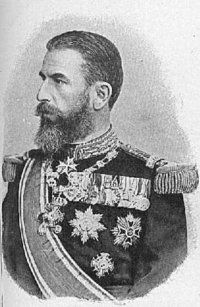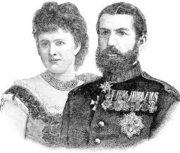Carol I of Romania
|
|
| Template:House of Hohenzollern-Sigmaringen |
Carol I, original name Karl Eitel Friedrich Zephyrinus Ludwig von Hohenzollern-Sigmaringen (April 20, 1839 - October 10, 1914) was elected Domnitor (prince) of Romania in April 1866 following the overthrow of Alexander John Cuza, and proclaimed king on March 26, 1881. He was the first ruler of the Hohenzollern-Sigmaringen dynasty which would rule the country until the proclamation of a republic in 1947.
During his reign he personally led Romanian troops during the Russo-Turkish War, 1877-78 and assumed command of the Russo/Romanian army during the siege of Pleven. The country achieved full independence from the Ottoman Empire (Treaty of Berlin, 1878) and acquired the southern part of the Dobruja from Bulgaria in 1913. Domestic political life, still dominated by the country's wealthy landowning families organised around the rival Liberal and Conservative parties, was punctuated by two widespread peasant uprisings, in Walachia (the southern half of the country) in April 1888 and in Moldavia (the northern half) in March 1907.
He married Princess Elizabeth of Neuwied in 1869.
Carol's childlessness left his elder brother Leopold next in line to the throne. In October 1880 Leopold renounced his right of succession in favour of his son William, who in turn surrendered his claim eight years later in favour of his younger brother, the future king Ferdinand.


